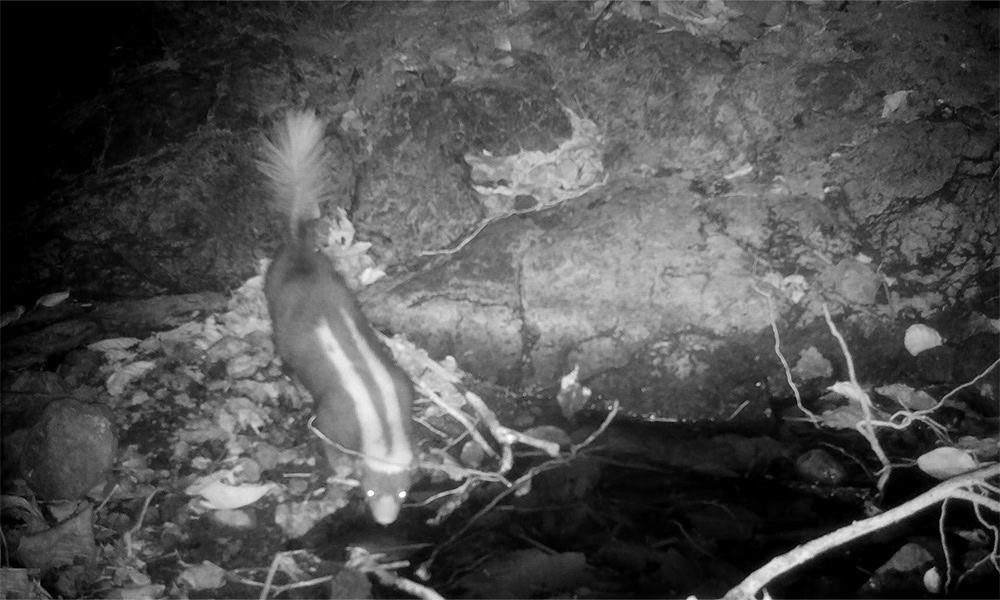Today we meet the striped hog-nosed skunk, a little-known species that inhabits forests throughout Costa Rica. The striped hog-nosed skunk (Conepatus semistriatus) is known as the zorro hediondo rayado in Spanish. It is one of three species of skunk that call Costa Rica home and the only one that lives throughout the entire country. The other two species, the hooded skunk and the spotted skunk, are confined mostly to Guanacaste, on the Pacific coast of the country.
If I say picture a skunk in your mind, a striped hog-nosed skunk mostly looks like what you’re picturing. They’re black with a pair of white stripes that connect on its forehead. What might be a little different than you’re imagining is that these skunks are large, sometimes more than 7 pounds, their coat is quite short, and that classic fuzzy skunk-tail is a little different.
Instead of being fuzzy the whole length of the tail, the tail starts out with shorter hair and then puffs out at the top. The ‘hog-nosed’ part refers to the fact that it has an unusually large snout which hangs well over the lower lip.
Facts about the lives of striped hog-nosed skunks are hard to come by because they haven’t been studied in the wild in any depth. The general facts about them include that they are mostly solitary and mostly nocturnal. They hide under logs and in burrows during the day. When they emerge at night, they use their long, sharp front claws to dig at the dirt and leaflitter in search of small vertebrates and fruit. As for reproduction, it’s estimated that their gestation period is about 2 months, and they have somewhere between two to five young at time.
Being unsatisfied with what my books and an internet search told me about striped hog-nosed skunks, I did some digging around in the scientific literature to find more. What I found didn’t really quench my thirst for skunk knowledge. The studies I came across were mostly investigations into activity patterns (mostly nocturnal), habitat preference (they can live in a wide variety of habitats), and range (they’re still being found in new places). A few of the studies admitted that the skunks weren’t even the focus of the investigation and what they were publishing was extra information from studies that focused on other species, like jaguars.
Though I’ve never seen a living striped hog-nosed skunk with my own eyes (I’ve seen lots of roadkill), I have recorded them many times throughout Costa Rica with my camera traps. I can vouch for the fact that they thrive in a variety of habitats. I’ve recorded them in super dry tropical forest where water can be quite hard to come by, as well as forests so humid that the rain constantly destroys my cameras.
I’ve also recorded an interesting activity pattern. On several occasions I’ve recorded a pair of skunks walking in a strange, mirrored pattern where they’re walking directly beside each other, taking steps in unison. Maybe I’ll publish my discovery in an article entitled, ‘The Skunk Waltz.’
I’ve selected a few of my favorite striped hog-nosed skunk clips, including a few waltzes, in the video below. Enjoy.
About the Author
Vincent Losasso, founder of Guanacaste Wildlife Monitoring, is a biologist who works with camera traps throughout Costa Rica.






